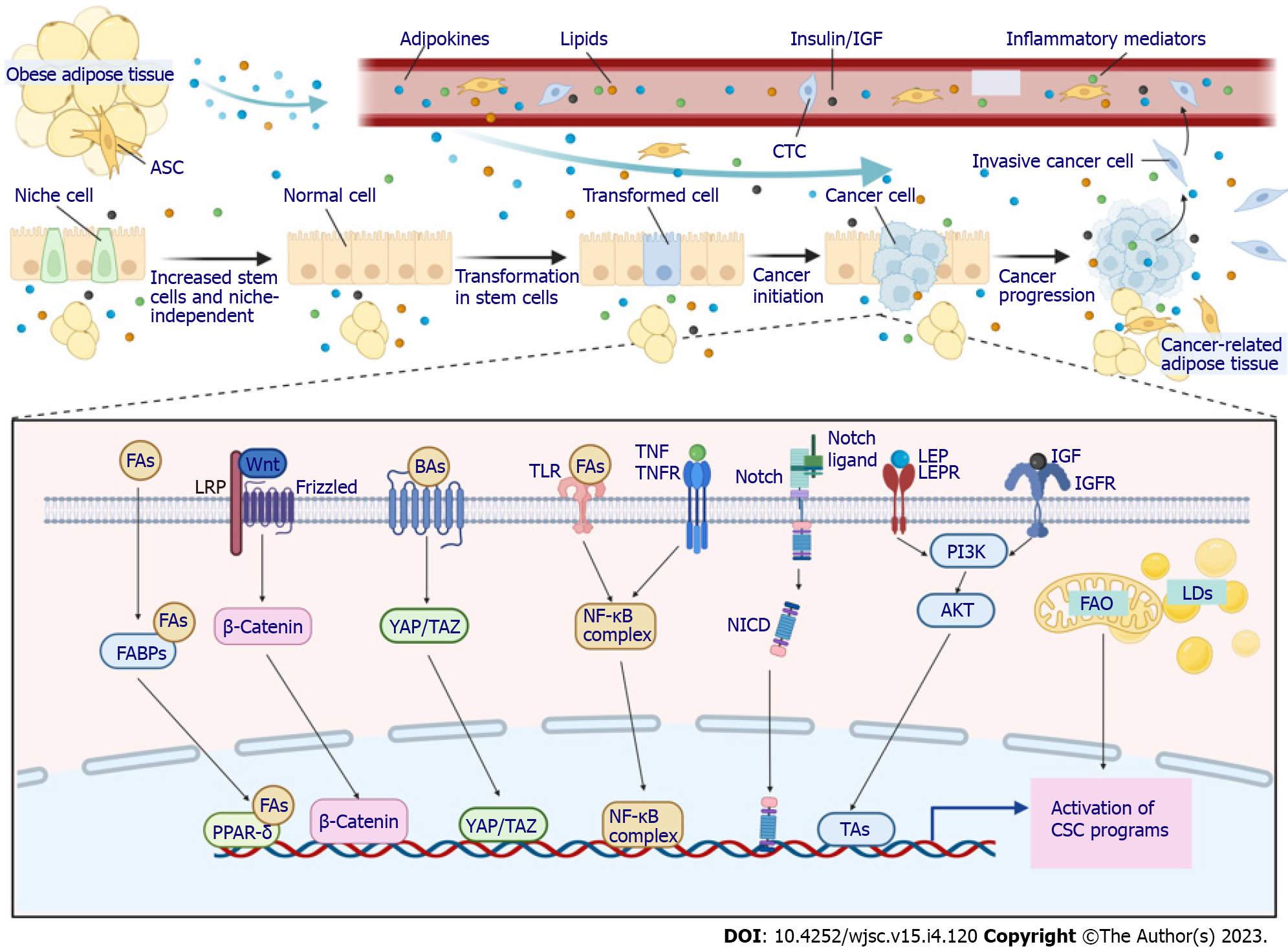Copyright
©The Author(s) 2023.
World J Stem Cells. Apr 26, 2023; 15(4): 120-135
Published online Apr 26, 2023. doi: 10.4252/wjsc.v15.i4.120
Published online Apr 26, 2023. doi: 10.4252/wjsc.v15.i4.120
Figure 2 Mechanisms linking obesity and cancer stem cells.
In the obese microenvironment, the stem cell pool is increased and loses niche dependence, predisposing these stem cells to transformation. Several main factors are considered to connect obesity and cancer stem cells (CSCs): Components of pro-obesity diets, metabolic and hormonal alterations associated with obesity, dysfunctional adipose tissue in the tumor microenvironment, low-grade obesity-related inflammation, self-renewal and stemness pathways, and microbiome dysbiosis. These factors are intimately linked to and cross-talk with each other, synergistically leading to the activation of CSC programs through various signaling pathways. ASC: Adipose stem cell; BAs: Bile acids; CSC: Cancer stem cell; CTC: Circulating tumor cell; FAs: Fatty acids; FABPs: Fatty acid binding proteins; FAO: Fatty acid oxidation; IGF: Insulin-like factor; IGFR: Insulin-like receptor; LDs: Lipid droplets; LEP: Leptin; LEPR: Leptin receptor; LRP: Low-density lipoprotein receptor-related protein; NCID: Notch intracellular cytoplasmic domain; PI3K: Phosphatidylinositol 3-kinase; PPAR-δ: Peroxisome proliferator-activated receptor δ; TAZ: Transcriptional coactivator with PDZ-binding motif; TFs: Transcription factors; TLR: Toll-like receptor; TNF: Tumor necrosis factor; TNFR: Tumor necrosis factor receptor; YAP: Yes-associated protein; NF-κB: Nuclear factor-kappaB.
- Citation: Xie WJ, Li J. Obesity and cancer stem cells: Roles in cancer initiation, progression and therapy resistance. World J Stem Cells 2023; 15(4): 120-135
- URL: https://www.wjgnet.com/1948-0210/full/v15/i4/120.htm
- DOI: https://dx.doi.org/10.4252/wjsc.v15.i4.120









